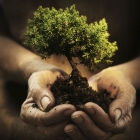-
 +3 +1
+3 +1Humanity’s Origins Paint Our Ancestors as Lovers, Not Fighters
Fossil and gene discoveries paint an ever-more-intertwined history of humans combining with vanished species like Neandertals
-
 +16 +1
+16 +1Study: Conservation actions are effective at halting and reversing biodiversity loss
A major international study has shown that conservation efforts to reduce biodiversity loss are working, with two out of every three measures making a positive impact.
-
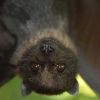 +33 +1
+33 +121 species removed from endangered list due to extinction, U.S. wildlife officials say
The Fish and Wildlife Service said 21 species, including a mammal, birds, fish and mussels, are being removed from the endangered list because they're now considered extinct.
-
 +19 +1
+19 +1Mexico, conservation group boost efforts to save tiny vaquita porpoise
The Mexican government announced a new agreement with conservation group Sea Shepherd on Tuesday aimed at boosting protection of the endangered vaquita porpoise, as the world's smallest cetacean nears extinction.
-
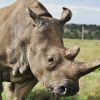 +15 +1
+15 +1Biodiversity: Almost half of animals in decline, research shows
A study led by Queen's University Belfast finds 48% of species are undergoing population declines.
-
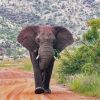 +13 +1
+13 +1‘A wake-up call’: total weight of wild mammals less than 10% of humanity’s
The total weight of Earth’s wild land mammals – from elephants to bisons and from deer to tigers – is now less than 10% of the combined tonnage of men, women and children living on the planet. A study by scientists at Israel’s Weizmann Institute of Science, published this month, concludes that wild land mammals alive today have a total mass of 22m tonnes. By comparison, humanity now weighs in at a total of around 390m tonnes.
-
 +21 +1
+21 +1Ecosystem collapse ‘inevitable’ unless wildlife losses reversed
The steady destruction of wildlife can suddenly tip over into total ecosystem collapse, scientists studying the greatest mass extinction in Earth’s history have found. Many scientists think the huge current losses of biodiversity are the start of a new mass extinction. But the new research shows total ecosystem collapse is “inevitable”, if the losses are not reversed, the scientists said.
-
 +15 +1
+15 +1The Endangered Species Act Turns 50: Assessing Successes & Failures
Thanks to the ESA, at least 227 species have been saved from extinction and 110 species have seen a tremendous recovery including American alligators, bald eagles, peregrine falcons, and humpback whales.
-
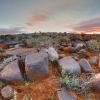 +3 +1
+3 +1Mercury Helps to Detail Earth’s Most Massive Extinction Event
The Latest Permian Mass Extinction (LPME) was the largest extinction in Earth’s history to date, killing between 80-90% of life on the planet, though finding definitive evidence for what caused the dramatic changes in climate has eluded experts.
-
 +20 +1
+20 +1Supercomputer Says 27% of Life on Earth Will Be Dead by the End of This Century
No matter how scientists queued up one of Europe’s most powerful supercomputers, the results remained the same: Mass extinction of plants and animals isn’t slowing down. It’s only growing. A new study from a European Commission scientist and a professor from Australia modeled climate and land use changes and their impact on plant and animal species. The results are bleak: the supercomputer says 10 percent of all plant and animal species will disappear by 2050, and 27 percent of vertebrate diversity will vanish by 2100. Yeah, that’s over a quarter of our animals gone in about 75 years.
-
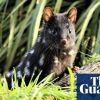 +12 +1
+12 +1Release of 10 quolls boosts ‘insurance’ population of endangered marsupial
The animals were released into Aussie Ark’s 400-hectare Barrington Wildlife Sanctuary
-
 +18 +1
+18 +1Emperor penguin at risk of extinction, along with two-thirds of native Antarctic species, research shows
Two-thirds of Antarctica’s native species, including emperor penguins, are under threat of extinction or major population declines by 2100 under current trajectories of global heating, according to new research that outlines priorities for protecting the continent’s biodiversity.
-
 +20 +1
+20 +1Children born today will see literally thousands of animals disappear in their lifetime, as global food webs collapse
New research finds nearly 30% of land animals could disappear form their local area by 2100 due to climate change and habitat destruction. This is more than double previous predictions.
-
 +12 +1
+12 +1Earth's next mass extinction 'will happen by 2100 killing quarter of species'
More than a quarter of the world’s animals and plants will go extinct by the end of the century, warns a new study. The terrifying conclusion comes after scientists consulted one of Europe’s most advanced supercomputers.
-
 +20 +1
+20 +1Climate change is hammering insects — in the tropics and everywhere else: Scientists
Climate change-induced higher temperatures, shifting seasons, extreme drought and precipitation events, extended heat waves and fires are all impacting insects, with resonating effects on habitats, other wildlife and humanity.
-
 +13 +1
+13 +1Banana Genomes Hint at Hidden Species We Urgently Need to Find
The history of the banana is more complicated than you might have ever imagined (if you ever thought about it at all).
-
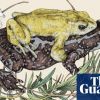 +13 +1
+13 +1Animals we’ve lost: the vivid ‘waving’ frog that vanished suddenly
Chiriquí harlequin frogs went extinct in 1996 due to a fungal disease that has driven the decline of 501 amphibian species
-
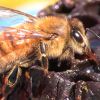 +12 +1
+12 +1Wild Bees Could Die Out Due To Climate Change, Swiss Beekeeper Warns
A Swiss beekeeper has warned that some wild bee species could go extinct due to the long-term effects of global warming. All other species of bees apart from the honey bee are commonly referred to as wild bees. They do not produce beeswax or honey but do collect pollen to feed their young.
-
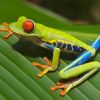 +4 +1
+4 +1Amphibian collapses increased malaria incidence in Central America
Since the global pandemic began in 2020, the world has become ever more aware that the health of our species is closely intertwined with other animals. Today, the conversation is mostly focused on birds and mammals, with amphibians rarely considered – but that may be a dangerous oversight.
-
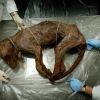 +21 +1
+21 +1We Need to Talk About the Resurrection of Extinct Species
When Hank Greely, a law professor at Stanford University, took to the stage at 2013's TEDx De-extinction conference in Washington, DC, he posed a simple question. "De-extinction," he started. "Hubris? Or hope?" The answer, he offered to a smattering of laughter, was "Yes." Greely's talk, which you can watch on YouTube, has played on my mind a lot since US biotech startup Colossal announced on Aug. 16 that it will finance an extremely ambitious research project to resurrect the thylacine, or Tasmanian tiger.
Submit a link
Start a discussion
















